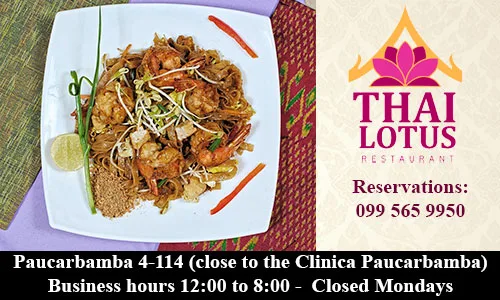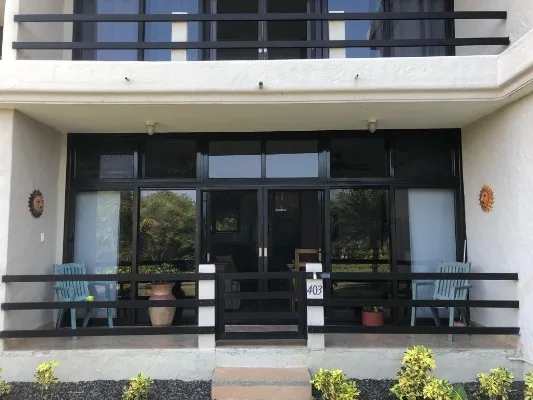Classes of Cuenca expats: How new residents share cohort traits with those arriving at the same time
By David Morrill and Deke Castleman
The large influx of foreigners to Cuenca in the past decade-and-a-half has turned this Andean city into a world-class laboratory experiment for what immigration experts call “amenities migration” or “voluntary migration.”

Early expats share some tall tales at a “Gringo Night” in 2007 at the old Eucalyptus Cafe on Calle Simon Bolivar.
In the early years, expats were overwhelmingly retirees from the U.S. and Canada. While older North Americans still predominate, today we are seeing a demographic shift toward younger newcomers, including families with children. According to local rental agents, the number of Europeans and Asians could soon equal that of the gringos
A notable phenomenon of the influx, no matter the timing, is how the successive waves of immigrants display certain cohort characteristics.

Partying and night life was a mainstay of expat life in the early years of the Cuenca boom.
In some ways, the expatriation movement to Cuenca can be compared to college classes. A “class” in this case constitutes a group of expats who arrive about the same time, face similar challenges together, and form a cohort group that tends to stick together, to the exclusion of classes that came before or after. The members share broad cultural concerns due to their time of arrival as well, procedural and bureaucratic interests, such as visa and driver license requirements. Many of them focus on learning Spanish.
Expats arriving in Cuenca 15 or more years ago — before the boom — discovered that only a handful of world travelers and adventurers had preceded them. Though they were a fairly tight-knit group by necessity, they could hardly be called a class (the bartenders at Ruby Red’s, Wunderbar, Eucalyptus and Cafecito considered them more of a mob). The group ranged in age from early 20s to late 50s, some stopping off only briefly on tours of self-exploration while others were running from the law back home. Their circumstances and timing were too random to aggregate into a cohort.

Expats gather in 2012 at the old California Kitchen for a presentation by the staff of the U.S. Embassy.
Then came what could be called the Class of 2007-2010, following Cuenca’s “discovery” by the world news media. The heightened attention was capped off by the city’s designation by International Living in 2008 as the world’s number one retirement destination.
This group had a number of things in common (and pardon the following generalizations, which might or might not reflect accurately on individual expats). They arrived around the same time. They were fed up with the sputtering economy in North America and what they perceived as the erosion of personal liberties — and they were older, averaging in their early 60s.. They were also looking for something more out of life although the goal was vague. This class included investors and was more inclined to buy their housing than to rent it, unlike later classes.
The Class of 2011-2014, by contrast, consisted more of strategic defaulters, bailing on their mortgages and credit-card debt, shipping down their possessions and setting up in upscale apartments and condos. Although these expats tended to buy as often as they rented, they did, to a generalized extent, establish a trend of expatriating for economic reasons. Many were what some journalists writing about the Cuenca boom called “economic refugees.” Many left their home countries with a diminished nest egg, if any, and were focused on living inexpensively.

Expats were frequently the subject of international press coverage like this group interviewed by CBS news in 2014.
This class, as the Cuenca expat movement matured, also contained more hucksters, snake-oil merchants and con men than earlier ones. A few came with money, hell-bent on making more, and were easily bamboozled by bank pitchmen peddling 14 percent interest rates and “can’t-miss” gold mine investments. Many in the group lost a lot of money. Many returned home, blaming Cuenca instead of their own greed and naivete, on their way out the door.
The Class of 2015 to 2018 begin to exhibit the demographic shift toward youth with entire families arriving together. The number of Europeans also began to grow proportionately and Asians, particularly Chinese, made an appearance. Many in the class had most of their lives ahead of them and did not necessarily see Cuenca as a final destination, although they were open to staying. They tended to be more entrepreneurial than earlier classes, many with internet-based jobs and a greater interest in outdoor adventure.

Because of low costs, eating out has been popular with all classes of Cuenca expats through the years.
The Class of 2019 to 2021 reflected and extended the trend of 2015 to 2018 entrants, with the number of younger newcomers — those under 50 — beginning to equal that of older North Americans. Migrants from Europe, Asia and Africa became increasingly prominent. Professionally, the percentage of expats with paying online jobs increased. There was also an increase in economic refugees, almost all of them from the U.S., most living on Social Security. Most significant, the class has endured the Covid-19 pandemic. Four or five expats — from all classes — are said to have died as a result of the virus.
After a few years, the cohort classes tend to break apart. Some people leave Cuenca for new expat destinations or return to the home country. Others integrate more fully into the broader expat community. Some forsake the expat community in favor of Ecuadorian families, via marriage. Many relocate to smaller towns and rural areas outside of Cuenca. A sizeable number die of old age.
Again, these are general observations that describe Cuenca’s “amenities migration” expats through the years, from a community of 300 to an estimated 10,000 today. The reasons for expatriating are rarely cut and dried and can, in addition to those cited above, include: work, quality of life, ability to retire, cultural exchange, climate, marriage (to an Ecuadorian), volunteering, a jumping-off point for further travel and expat experiences, learning Spanish, teaching English, affordable health care, friendly people, the ability to get along without a car, Christian ministry, less government intrusion, healthier food, and a healthier lifestyle.


















